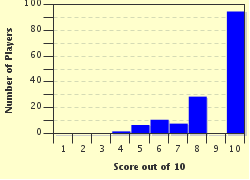Quiz Answer Key and Fun Facts
1. Carthaginian general
2. Called "the Great", built Abu Simbel
3. Leader of the Huns
4. Wrote "The Art of War"
5. Parted the Red Sea
6. Tried to change Egyptian religion
7. Indian emperor, follower of "dharma"
8. King of first Mesopotamian empire
9. Early Christian missionary
10. Founder of Taoism
Source: Author
ponycargirl
This quiz was reviewed by FunTrivia editor
NatalieW before going online.
Any errors found in FunTrivia content are routinely corrected through our feedback system.


